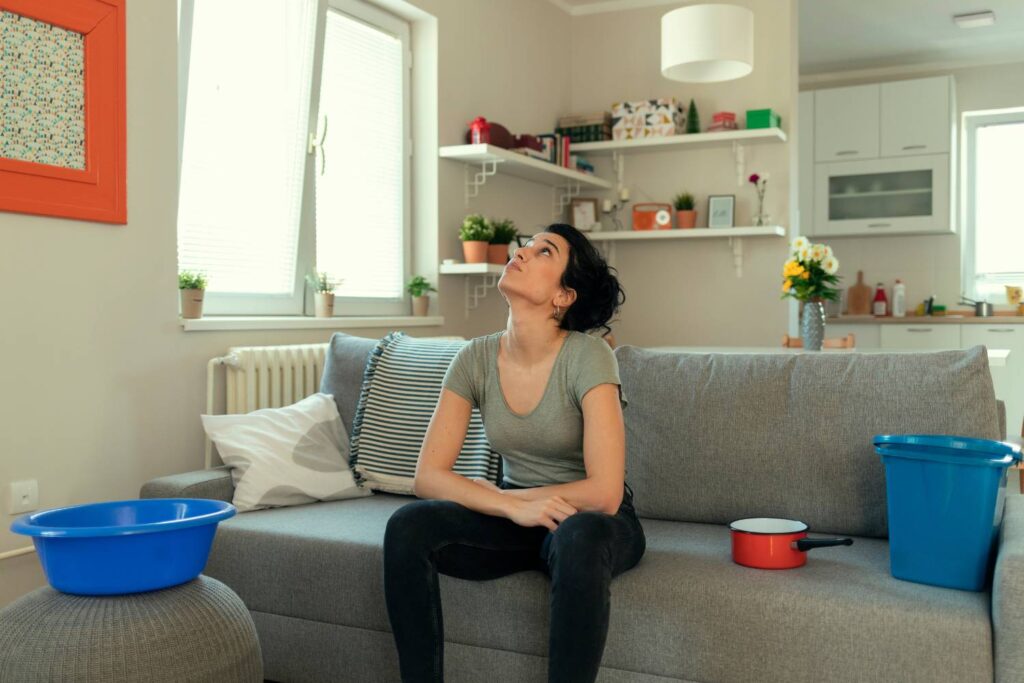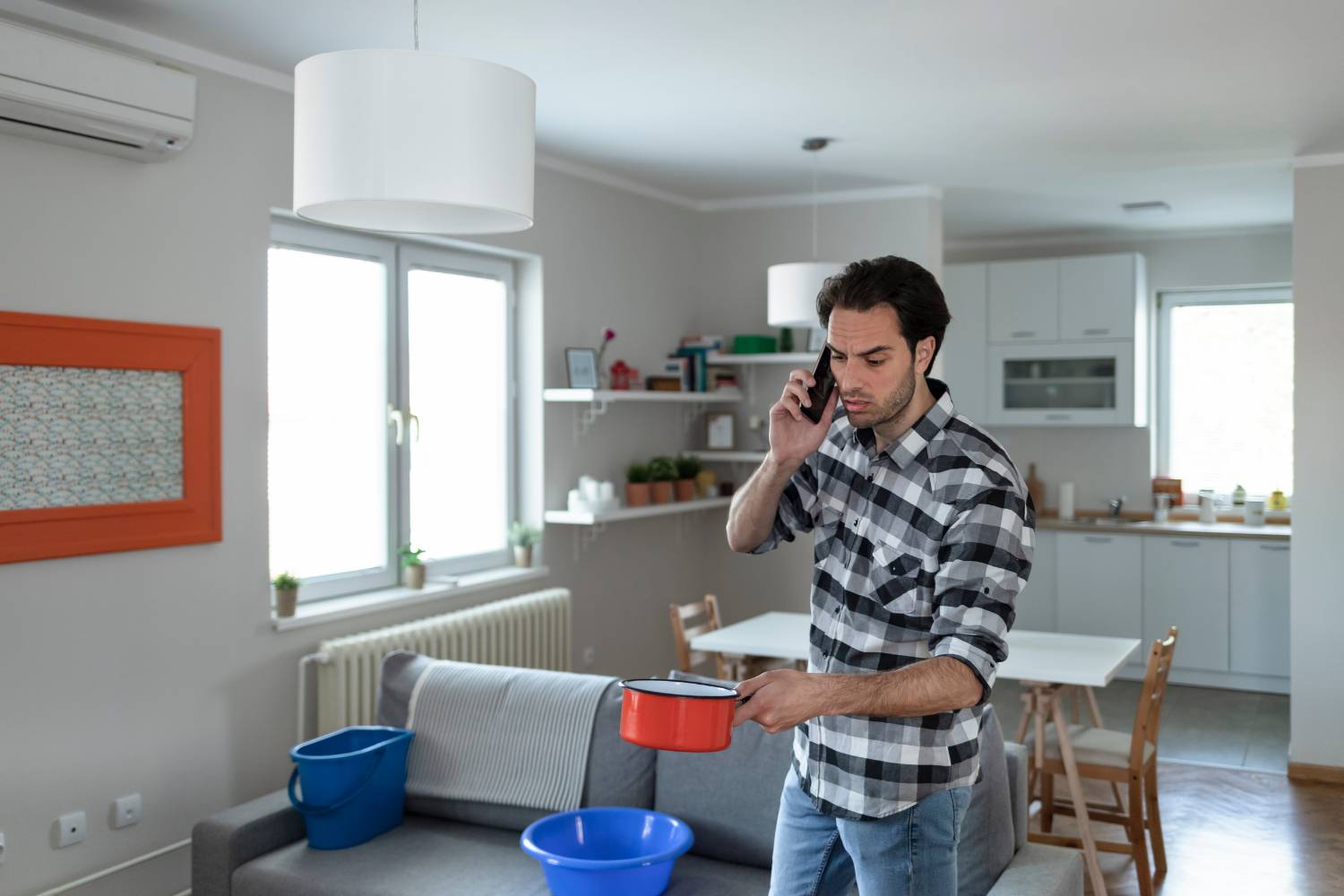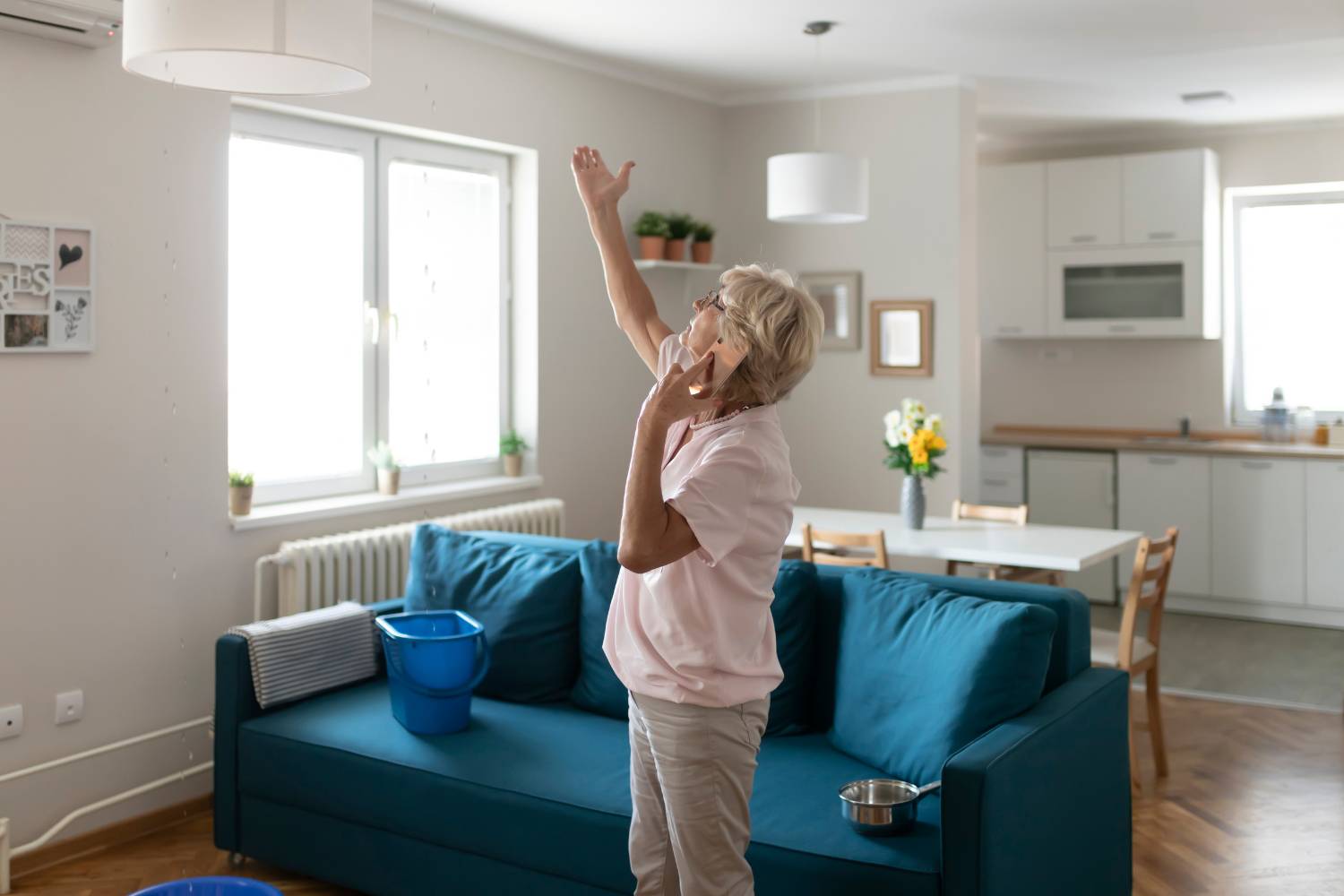Roof leaks are a homeowner's nightmare, often leading to significant damage and costly repairs if not addressed promptly.
Recognising the early signs of a roof leak can save you from extensive damage and ensure the safety and comfort of your home. In this blog, we will delve into the various indicators that your roof might be leaking, helping you stay ahead of potential problems.
Why Is It Important To Detect Roof Leaks Early?
Detecting roof leaks early is crucial for maintaining the integrity of both residential and commercial properties. Early detection not only helps in preventing significant damage but also ensures the safety and comfort of the building's occupants. Here are the key reasons why early leak detection is essential.
Saves Money on Costly Repairs
Prevent Escalation
Early detection allows for minor issues to be fixed before they escalate into major problems, saving on extensive repair costs. Regular inspections can identify small problems such as minor leaks, loose shingles, or tiny cracks that, if left unattended, could lead to significant damage. For instance, a small leak could grow and lead to extensive water damage, mould growth, or structural issues, which would require costly repairs.
Maintenance Costs
Regular inspections and proactive measures reduce overall maintenance costs. By consistently maintaining your roof, you can avoid the high expenses associated with major repairs or replacements. Scheduled maintenance helps identify potential problems early, ensures that minor repairs are handled promptly, and prevents them from developing into larger, more expensive issues. This approach not only extends the lifespan of your roof but also ensures that you are not hit with unexpected, large repair bills.
Advanced Technologies
The use of advanced technologies like thermal imaging can help in early identification and repair, minimising long-term damage. Thermal imaging cameras can detect temperature differences in the roof's surface, revealing hidden moisture, leaks, or insulation problems that are not visible to the naked eye.
By using such technologies, homeowners and professionals can pinpoint exact problem areas, allowing for targeted repairs. This precision not only saves money by avoiding unnecessary work but also ensures that the root cause of the problem is addressed, preventing future issues and additional expenses.
Prevents Structural Damage
Roof Integrity
Why Addressing Leaks Early is Crucial
One of the primary benefits of regular roof maintenance and timely repairs is the preservation of roof integrity. When leaks are addressed promptly, it prevents water from seeping into the roof structure.
Extends Roof Lifespan
How Do Timely Repairs Maintain Roof Durability?
Timely repairs are crucial in maintaining a roof's durability. When small issues such as cracks, leaks, or loose shingles are addressed promptly, they prevent them from developing into larger, more costly problems.
Neglecting these minor issues can lead to extensive water damage, mould growth, and structural weakening of the roof. By conducting regular inspections and fixing problems as soon as they are detected, the roof remains strong and resilient against the elements, reducing the frequency of necessary maintenance and prolonging its overall lifespan.
Prevents Water Damage
Material Preservation
Early detection of potential roofing issues is crucial for preserving roofing materials. When small problems, such as minor leaks or cracks, are identified and addressed promptly, they prevent water from infiltrating deeper into the roof structure.
This proactive approach helps in maintaining the integrity of the roofing materials, be it tiles, shingles, or metal sheets, ensuring their longevity and reducing the need for extensive repairs or premature replacements.
Mould and Mildew Prevention
Water intrusion due to damaged roofing can create a conducive environment for the growth of mould and mildew. These fungi thrive in moist conditions and can spread rapidly, causing not only structural damage to the roof and building but also posing significant health risks.
Mold and mildew release spores that can lead to respiratory issues, allergic reactions, and other health problems for the inhabitants. By preventing water ingress, the growth of these harmful fungi is inhibited, safeguarding both the property and its occupants.
Protection of Interior Spaces
A well-maintained roof acts as a barrier against water entering the interior spaces of a home. When water penetrates through a compromised roof, it can damage ceilings, walls, and insulation, leading to unsightly stains, weakening structural elements, and fostering the conditions for mould growth.
This can result in costly repairs and a decline in the aesthetic and functional quality of the living space. Regular roof inspections and timely repairs ensure that the roof continues to protect the home's interior, preserving its condition and comfort.
Minimises Disruption
Operational Continuity
Early intervention and regular maintenance can significantly reduce the likelihood of severe roof damage that necessitates major repairs.
When roof issues are addressed promptly, the need for large-scale repair work is minimised, ensuring that daily activities at home or business operations can continue without interruption. For businesses, this means avoiding potential shutdowns or restricted access, which can lead to lost revenue and productivity. For homeowners, it means maintaining a comfortable and safe living environment without the inconvenience of dealing with prolonged construction work.
Aesthetic Preservation
A well-maintained roof plays a crucial role in the overall appearance of a property. Early repairs and regular maintenance help prevent the development of unsightly issues such as water stains on ceilings, peeling paint, and mould growth. These problems not only detract from the property's curb appeal but can also affect its value.
By addressing minor issues before they escalate, property owners can preserve the clean, polished look of their homes or business premises, ensuring that the property remains attractive and well-kept. This is particularly important for businesses where first impressions matter and for homeowners who take pride in the appearance of their residences.
Prevents Extensive Damage
Early Detection Protects Valuable Assets Inside The Building From Water Damage
Water damage can wreak havoc on your home's structure and its contents. Early detection and timely repairs can safeguard your valuable assets, such as furniture, electronics, and personal belongings, from the destructive effects of water intrusion.
By addressing potential leaks and vulnerabilities in your roof promptly, you can prevent damage to your interiors, which not only preserves the aesthetic and functional integrity of your home but also avoids the costly replacements of damaged items.
Early Repairs Are More Cost-Effective Compared To Major Renovations Or Replacements Needed After Prolonged Damage
When it comes to maintaining your roof, a proactive approach to repairs can lead to significant long-term savings. Minor issues, such as small leaks or damaged shingles, are often inexpensive and straightforward to fix. However, if left unattended, these minor problems can escalate into major issues, requiring extensive renovations or even complete roof replacements.
These larger projects are not only more costly but also more time-consuming and disruptive. By investing in regular inspections and early repairs, homeowners can mitigate the risk of extensive damage and the high costs associated with major renovations, ensuring the longevity and durability of their roof and overall property.
Unusual Sounds And Smells Of Roof Leaks
Roof leaks can lead to significant structural damage and health risks if left unaddressed. Detecting the early signs, including unusual sounds and smells, can help prevent costly repairs and maintain the integrity of your home. Here's a comprehensive guide on the unusual sounds and smells that indicate roof leaks and what you can do about them.
Signs of Roof Leaks: Unusual Smells
Musty or Mildew Odor
A persistent musty smell is a common sign of a roof leak and often indicates mould growth. This odour is distinct from the fresh, earthy scent of rain. Mould thrives in moist environments, and its presence suggests that water is seeping into your attic or walls.
This water intrusion creates the perfect breeding ground for mould, which not only damages the structural integrity of your home but can also pose health risks to the inhabitants. If you notice a musty smell, it's crucial to investigate further to prevent extensive damage and ensure a healthy living environment.
Wet or Damp Smell Indoors
If your home smells damp during or after a rainstorm, it is a strong indicator that water is infiltrating your roof. This damp smell is often due to water soaking into wooden beams, insulation, or drywall. The wet wood and other materials emit a distinct odour that can be easily noticed indoors.
Over time, this moisture can lead to rot, weakening the structure of your home and potentially leading to costly repairs. Additionally, prolonged dampness can contribute to the growth of mould and mildew, exacerbating the issue and creating a more unpleasant indoor environment.
Signs of Roof Leaks: Unusual Sounds
What Does Creaking, Cracking, or Popping at Night Mean?
When you hear creaking, cracking, or popping sounds at night, it's often due to the natural contraction and expansion of roofing materials with temperature changes. While this is common and usually harmless, persistent or loud noises may indicate underlying structural issues that need attention. It's crucial to monitor these sounds, as they can be early signs of problems like loose shingles or compromised roofing materials that could lead to leaks.
Why Do I Hear Thumping or Tapping on My Roof?
Thumping or tapping sounds are often caused by animals such as raccoons, birds, or squirrels that might be nesting on your roof. These creatures can cause damage to roofing materials and insulation. If you hear these noises frequently, it's advisable to contact wildlife removal specialists who can safely and humanely address the issue, preventing further damage to your roof.
What Does a Dripping Sound During Rain Indicate?
Hearing a dripping sound during rain is a clear indication of a potential leak in your roof or clogged gutters. This sound suggests that water is finding its way through the roofing material or overflowing from the gutters, which can cause significant damage to your home if not addressed promptly. A professional inspection and repair are necessary to identify the source of the leak and fix it before it leads to more severe issues such as water damage, mould, or structural problems.
What Causes Rumbling or Roaring Noises in High Winds?
Rumbling or roaring noises during high winds typically signal that some parts of your roof, such as shingles or tiles, are loose. These sounds suggest that the roofing materials are not properly secured, which can lead to them being blown off, creating gaps that allow water to seep in. Ensuring your roof is secure before the next storm hits is crucial to prevent leaks and potential structural damage.
Additional Indicators of Roof Leaks
- Flickering Light Fixtures: Water may have reached the wiring, posing a serious safety hazard.
- Water Pooling in the Ceiling: Paint bubbling or water stains on the ceiling are signs of significant leaks.
- Visible Sunlight in the Attic: Seeing daylight through the roof indicates gaps or holes in the shingles.
- High Humidity Levels in the Attic: Excessive moisture can lead to mould growth and structural damage.
- Staining or Discoloration: Dark or yellowish stains on the ceiling or walls signal water infiltration.
- Shiners: Frost on roofing nails can indicate poor installation and moisture problems.
Conclusion
In conclusion, recognising the early signs of a roof leak is essential for every homeowner. Early detection not only saves you from costly repairs but also ensures the safety and comfort of your home. By staying vigilant and conducting regular inspections, you can address minor issues before they escalate into major problems.
Investing in advanced technologies like thermal imaging can further aid in early identification, preserving the integrity of your roofing materials and extending the lifespan of your roof. Remember, proactive maintenance and timely repairs are key to preventing extensive damage, protecting your valuable assets, and maintaining a comfortable living environment.
Keep an eye out for unusual sounds and smells, as they often signal potential leaks that need immediate attention. With these preventative measures, you can safeguard your home from the detrimental effects of roof leaks and enjoy peace of mind.
Frequently Asked Questions
Common signs of a roof leak include water stains on the ceiling or walls, damp spots, and the presence of mould or mildew. You may also notice peeling paint or wallpaper, dripping water during heavy rain, and a musty smell in the attic or other areas of the house.
Roof leaks can be caused by various factors, including damaged or missing shingles, cracked flashing, clogged gutters, and ice dams. Other common causes include poor roof installation, aged roofing materials, and damage from storms or falling debris.
If you suspect a roof leak, it's important to act quickly to prevent further damage. Inspect your attic and the exterior of your roof for visible signs of damage. Contact a professional roofer to assess the situation and make necessary repairs. In the meantime, buckets or tarps should be used to catch and contain any leaking water.
Yes, even a small roof leak can lead to significant damage over time. Persistent leaks can cause structural damage to your home, weaken the roof's integrity, promote mould growth, and damage insulation. It's crucial to address leaks promptly to avoid costly repairs and potential health hazards.
Regular roof maintenance is key to preventing leaks. Schedule annual roof inspections, clean gutters regularly, and promptly repair any damage. Ensure proper attic ventilation to prevent moisture buildup, and consider installing a quality roof covering that can withstand local weather conditions.


